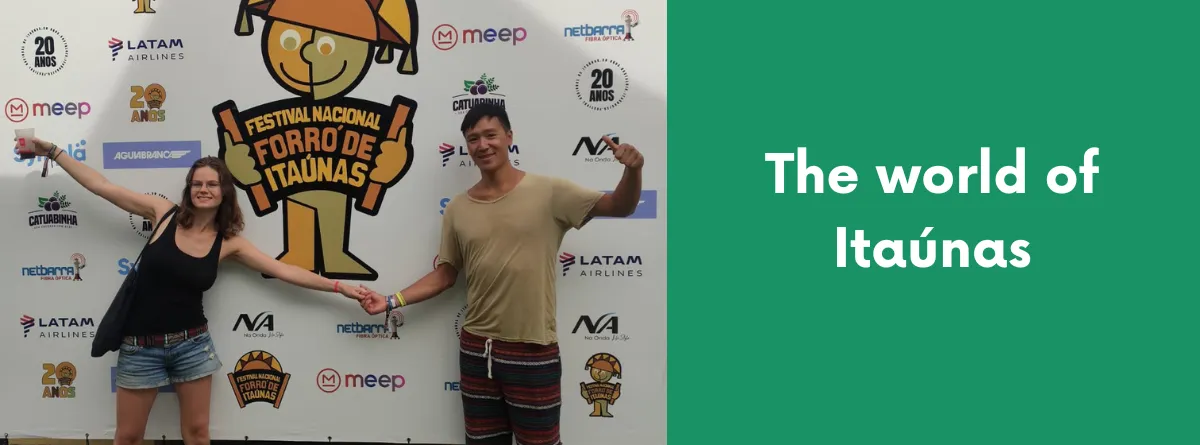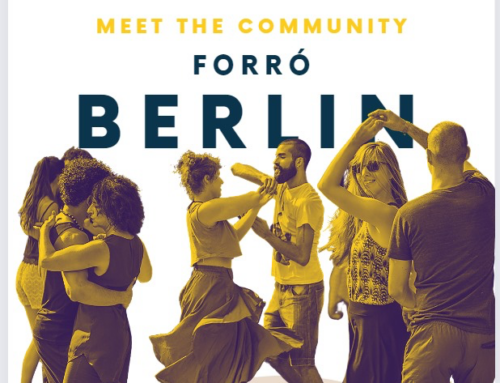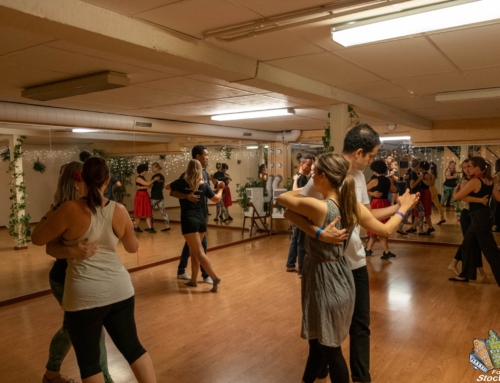Two French forrozeiros discover the world of Itaúnas
Claire from Lille and Michel from Paris spent nearly two months travelling through Brazil and they couldn’t miss a stop in Itaúnas for the festival! We had the chance to ask them some questions!
Claire, Michel, thanks for taking the time! Tell us a bit about your first time at the FENFIT.
If you had to describe Itaúnas with just a few words, which ones would you use?
Claire: passionate, non-stop, diverse
Michel: intense, addictive, rich in emotions
You are both regular festival participants in Europe, what are the major differences with a festival in Europe?
First of all, the rhythm and duration of the festival. It lasts all day and all night, the music is continuous, the bands and DJs follow one another for almost 9 days in a row. We don’t have festivals like this in Europe!
There are also several places to listen to music and to dance in this festival, there are three main programs.
It’s also a place full of history – Forró history! You can feel it in any instant!
One of the main differences: There is a lot of dust, especially in the padaria, where the staff often waters the ground to avoid that you’ll have to dance in a cloud of dust!
The consumption of drinks is much higher, alcohol or not, and at any time of the day, even in the morning. You can find beer, gin and tonics, caipi, soft drinks, and especially catuaba and catuçai, local drinks at any corner.
Do you need to buy tickets in advance?
No, not necessarily, you can buy tickets directly at the entrance. There is also a more varied offer, notably a solidarity rate: a good price in exchange for food, usually a kilo of rice, beans, cereals.
And what about workshops?
The workshop schedule is less intense, there are only two courses per day, of about one hour each, in the afternoon. In Europe we have considerably more opportunity to learn new steps, new styles with different teachers during a festival. But there are activities such as professional and amateur competitions, conferences and cultural workshops.
Tell us a bit about the live concerts!
There is a real excitement of the bands that play there. As they are performing in their home country, Brazil, the concert is more intense and the public is more receptive because they know all their repertoire.
And Itaúnas itself?
The whole village revolves around the festival: pousadas, restaurants, stores and stalls selling clothes, shoes, bags and belt bags, accessories, the street vendors selling drinks…. You have the impression that the whole village breathes in the rhythm of the festival!
Is the style of dance different from what you know?
There were teachers in Itaúnas that we know because they come sometimes to teach in Europe, so some of the styles were familiar to us. However, we were able to discover other styles because there is a wide range of dance schools and teachers throughout the country, with just as many possibilities. It was amazing to discover these other styles. Forró has endless possibilities in its dance!
How do people react when they hear that you are from Europe? Is everyone aware that there is also Forró in Europe?
Often they are surprised that we come from so far away to dance. They are not always aware that there are so many schools and musicians of Forró in Europe.
Rudolfo Batista and Zeu Azevedo, among others, played in Itaúnas this year and they took the opportunity to represent and advertise our Forró scene in Europe.
Will you come back?
Yes, most certainly! But apart from Itaunas, at this time of the year, there are also other events like the Festa Junina all over the country, Forró de Alegria in Buzios…. We had an amazing time and definitely recommend going there once in a lifetime – or more :)
A big thank you to you, Claire and Michel, for sharing your experience!
And what about you dear readers? Have you been to Itaúnas?






